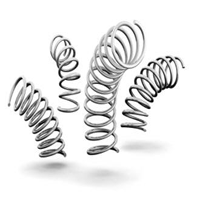
Psychology
The Traps of Resilience
Abstract: Some concepts seem to have the main purpose of hindering the resolution of our sufferings. That is the case for “resilience”, a concept extolling social adaptation at the expense of our rightful need for truth.

In a recent article about resilience, the psychoanalyst and psychiatrist Serge Tisseron wonders about the extraordinary infatuation that this notion currently raises in the French-speaking community. He writes: “Resilience, which in America is a social virtue associated with success, has become in France a kind of inner strength[1]...” Then the critic enumerates the “new clothes” adorning the concept born from American social psychology: it is a “marvelous jewel”, secreted and polished over long periods of time by the organism of those who cultivate “the art of rebound.” Still, the author notes, the resilient can him/herself become a source of traumatism for others, especially relatives, and “even sometimes display a great destructive energy.” Then why does the idea of resilience seem so attractive?
Giving hope
The meaning of resilience in psychology was designed as a metaphor of its original meaning: the capacity of a metal to resist rupture, to revert to its initial shape after a shock. Applied to human psyche, the notion claims to explain why some persons, severely traumatized, manage to “overcome” their sufferings and survive despite adversity. As one psychologist says: “Resilience is awesome, it gives hope[2].” Consequently, the ethologist and neuropsychiatrist Boris Cyrulnik, whose writings greatly helped popularizing this concept, was crowned “the shrink that restores hope.” (L’Express, 01.16.2003)
The notion of resilience obviously refers to the ability of human beings to repress the traumas inflicted upon them, in order to ensure their short-term survival. But, since the promoters of this concept do not acknowledge consciousness at play in everyone, nor the existence of a natural process of resolution of human suffering, they promote repression as a goal in itself and label as “resilience” their inability to reconnect with their traumatic memory. Thereby any rightful hope in the emancipation of humankind insidiously turns into its opposite. Indeed, a resilient person is not free from his/her torments, but subject to the workings of repression and compensation, to the behavioral patterns that once allowed him/her to survive in a hostile environment.
Repressing the past
The life story of Boris Cyrulnik illustrates how the author of A Marvellous Misfortune has theorized the notion of resilience from his own repressed, unacknowledged life experience. Even if for a long time he refused to talk publicly about his tragic past, Cyrulnik finally revealed in interviews some circumstances of his life that enable us to understand the adaptive strategies that he, as a child, had to apply in order to survive and escape death, and their relations with some of his current ideas.
Born in 1937, Boris Cyrulnik grew up in Bordeaux, France. During World War II, when he was five, his Jewish parents of Russian and Polish descent were deported and Boris was left to welfare services. A schoolteacher then took him under her wing. But during the Vichy police raid of January 10th, 1944, following a denunciation, he was arrested and held in the Synagogue waiting for his transfer to the Drancy camp. A nurse hid him under her cape, saving him from certain death. Years later he tracked her down and thanks to his testimony, the schoolteacher was honored as Righteous Among the Nations in July 1997[3].
Deprived of the most basic security by the madness of the adult world, and to avoid falling into that same madness, the young child dissociated his terrible despair from his conscious thoughts by making his peers laugh, gleaning here and there a sympathetic look. “I myself was helped because I always kept clowning around,” Cyrulnik confides to a journalist[4]. In his book Ugly Ducklings, the psychiatrist will theorize that strategy of survival by stating that some children – “forced to metamorphose” – can make it through because, in the absence of their parents, they know how to inspire in others the desire to help them.
Exonerating the parents
The popularity of the Cyrulnik “model” does not rely solely on the personality of its author. Through the prism of his sublimated pain, resilience does take a certain glow that could explain great book sales. But the concept is nowadays pervading all of society. And if it is eagerly referred to in informal discussions, it’s because it contributes to exonerating parents from their adult responsibilities in their children’s ill-being. In that paradigm, a baby crying when his mother leaves him at the nursery does not suffer from that separation, he’s merely “knitting his resilience”. A teenager who has bad grades at school or suicidal thoughts is not looking for communication with his parents, he just needs a “resilience tutor” in the school environment.
In so doing, the awareness and sensitivity that should guide us in unraveling relational and family problematics are dulled. By resorting to resilience, the suffering adult will compulsively address to himself the very commands that once tied him to repression: Don’t cry, be strong and brave, dry your tears now... He will be unable to free himself from the traumas that were inflicted upon him, lacking the ability to question the behavior of his parents and educators towards him.
Marc-André Cotton
(Translated from French by A. Cabanillas)
© M.A. Cotton – 04.2013 / regardconscient.net
Notes :
[1] Serge Tisseron, « “Résilience” ou la lutte pour la vie », Le Monde diplomatique, August 2003, .
[2] Maryse Vaillant, author of Il m’a tuée, éd. La Martinière, 2002, quoted by L’Express, January 16, 2003.
[3] Information gathered during the trial of Maurice Papon, Sud-Ouest, February 6, 1998 and L’Humanité, February 7, 1998. Boris Cyrulnik will detail the circumstances of his arrest in his autobiography, Sauve-toi, la vie t’appelle (Run for Your Life), published in 2012 by Odile Jacob.
[4] Interviewed by Jean-François Duval, Construire, January 3, 2001.
